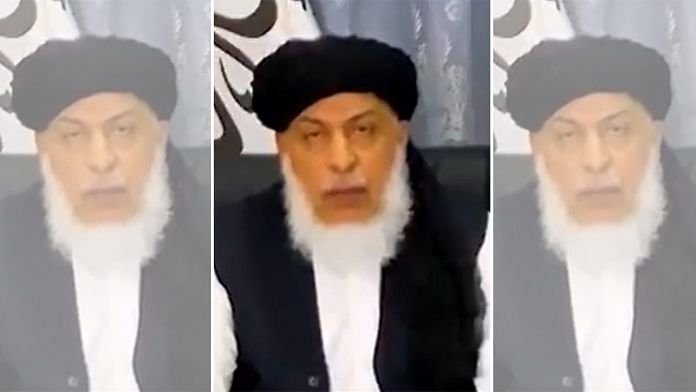New Delhi: Sher Mohammad Abbas Stanikzai, the Taliban’s head of political office in Doha, was a quiet, unremarkable gentleman cadet training at the Indian Military Academy (IMA) in Dehradun in the 1980s. So, his involvement in the Taliban in subsequent years came as a shock, one of his batchmates said.
The IMA trains cadets from a number of African and Asian countries including Afghanistan, since 1948. However, that one of its cadets would go on to become a top leader in a terrorist organisation was unfathomable at the time.
“He was part of a different company and battalion, but we were in the same batch. I remember him as being quite unremarkable, in the sense that he blended in,” Brigadier Sandeep Thapar (Retd), Stanikzai’s 1982 batchmate, told ThePrint.
“Usually the foreign cadets would keep to themselves. He didn’t express any outright views. But now we are rediscovering him once again,” he said.
On Saturday, Stanikzai released a statement saying the Taliban wanted to maintain “good relations” with India — bringing his own relationship with this country full circle.
بھارت کے ساتھ اچھے تعلقات چاہتے ہیں: شیر محمد ستانکزئی pic.twitter.com/8haTYSBxMj
— Independent Urdu (@indyurdu) August 28, 2021
Also read: Kabul shows up Biden as a sheep in sheep’s clothing. Allies Europe, India & Quad are watching
Who is Stanikzai?
Stanikzai, a Pashtun, was reportedly born in 1963 in Baraki Barak district in Afghanistan, and joined the IMA’s Bhagat Battalion’s Keren Company after studying political science in his home country.
“For the foreign cadets, the first priority is to maintain good relations as a diplomatic exercise. So how well they train in the academy is secondary to that. He would do his basic training, and that was it — nothing stands out to my mind,” said Thapar.
By the mid-1980s, Stanikzai passed out from the IMA in India and, according to Thapar, moved to join the Afghan Army where he served for over a decade, fighting the Afghan Soviet war when the Russians invaded Afghanistan. This is when he became “more political”, according to a New York Times report.
“If after serving his country for some 14 years, he switched over to the Taliban, there must have been some problem — no one can say. It definitely came as a shock,” Thapar said.
Stanikzai’s turn to the Taliban came in 1996, after the Soviets retreated.
According to the NYT, his close relations with Pakistan’s intelligentsia, his fluency in English, and his military prowess aided his rise in the terror group as deputy minister of foreign affairs, under foreign minister Wakil Ahmed Muttawakil, and later deputy minister of health till 2001.
2001 to now
After the Taliban’s fall in 2001, Stanikzai relocated to Doha where he has reportedly lived for over a decade, becoming among the group’s most important and indispensable leaders and chief negotiators.
He became the group’s leader of political office in 2015, and “has taken part in negotiations with the Afghan government and has represented the Taliban on diplomatic trips to several countries”, according to a report in Al Jazeera.
This report has been updated to correct a quote. The error is regretted.
Also read: The story of Jaswant Singh, the only Indian to have ever commanded a foreign Air Force




